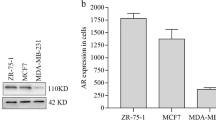Abstract
There are certain types of biological activity (carcinogenic, œstrogenic, androgenic, progestational and cortical) in which, although little or nothing is known of the mechanism of action, the chemical structures of the primary agents are rather precisely known. While potent carcinogenic and œstrogenic activity is characterized by very low specificity to molecular type, and high androgenic, progestational, and cortical activity is associated in each case with a single specific molecular type, all five types of activity are sensitive to stereochemical structural modification. Thus deoxycorticosterone acetate (I) possesses high cortical activity, whereas 17-isodeoxycorticOsterone acetate (II), which differs only in configuration at C17, is completely inactive1; similarly the activity of progesterone (III) disappears entirely in the epimeric 17-isoprogesterone (IV)2.
This is a preview of subscription content, access via your institution
Access options
Subscribe to this journal
Receive 51 print issues and online access
$199.00 per year
only $3.90 per issue
Buy this article
- Purchase on Springer Link
- Instant access to full article PDF
Prices may be subject to local taxes which are calculated during checkout
Similar content being viewed by others
References
Shoppee, C. W., Helv. Chim. Acta, 23, 925 (1940).
Butenandt, A., Schmidt-Thomé, J., and Paul, H., Ber., 72, 1112 (1939).
Ruzicka, L., and Kägi, H., Helv. Chim. Acta, 19, 842 (1936).
Selye, H., "Encyclopædia of Endocrinology", Section 1, 4, Synoptic Charts, p. 12 (Montreal, 1943).
Kirschbaum, E., Kleedorfer, A., Prillinger, F., Wessely, F., and Zajic, E., Naturwiss., 27, 131 (1939). Dodds, E. C., Golberg, L., Grünfeld, E. I., Lawson, W., and Robinson, R., Proc. Roy. Soc., B, 132, 83 (1944).
Kon, G. A. R., private communication.
Miescher, K., Anner, G., Billeter, K., Ehmann, L., Heer, J., and Rometsch, R., Helv. Chim. Acta, 27, 1727 (1944); 28, 156, 991, 1326, 1506 (1945); 29, 586, 859, 1071, 1231, 1889 (1946); 30, 413 (1947).
Heer, J., and Miescher, K., Helv. Chim. Acta, 29, 1894 (1946).
Bachmann, W. E., Cole, W., and Wilds, A. L., J. Amer. Chem. Soc., 62, 824 (1940).
Dimroth, K., and Jonsson, H., Ber., 74, 520 (1941).
Wieland, H., and Dane, E., Z. physiol. Chem., 216, 91 (1933).
Intelligence Report No. 245, Office of Publication Board, U.S. Dept. of Commerce.
Inhoffen, H. H., and Zühlsdoff, G., Ber., 74, 1911 (1941); 76, 233 (1943).
Wilds, A. L., and Djerassi, C., J. Amer. Chem. Soc., 68, 2125 (1946).
Combined Intelligence Objectives Sub-Committee, Item 24, File XXV-54, 20 (1945).
Marker, R. E., Kamm, O., Oakwood, T. S., and Laucius, J. F., J. Amer. Chem. Soc., 58, 1503 (1936).
Marker, R. E., J. Amer. Chem. Soc., 60, 1897 (1938).
Butenandt, A., Wolff, A., and Karlson, P., Ber., 74, 1308 (1941).
Butenandt, A., Friedrich, W., and Poschmann, L., Ber., 75, 1931 (1942); 77, 392 (1944).
Author information
Authors and Affiliations
Rights and permissions
About this article
Cite this article
SHOPPEE, C. Nature of the C/D-Ring Union in the Œstrogenic Hormones. Nature 160, 64–66 (1947). https://doi.org/10.1038/160064a0
Issue Date:
DOI: https://doi.org/10.1038/160064a0
This article is cited by
-
Les hormones œstrogènes, de leur découverte à leur synthèse totale
Experientia (1949)
-
Nature of the C/D-ring Union in the Å’strogenic Hormones
Nature (1948)
-
The C/D Ring Union in ŒStrone and Equilenin
Nature (1948)
Comments
By submitting a comment you agree to abide by our Terms and Community Guidelines. If you find something abusive or that does not comply with our terms or guidelines please flag it as inappropriate.



